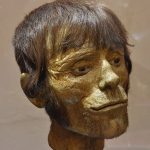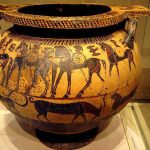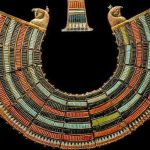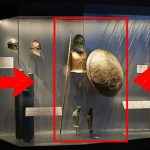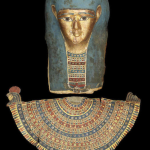#WorldHippoDay
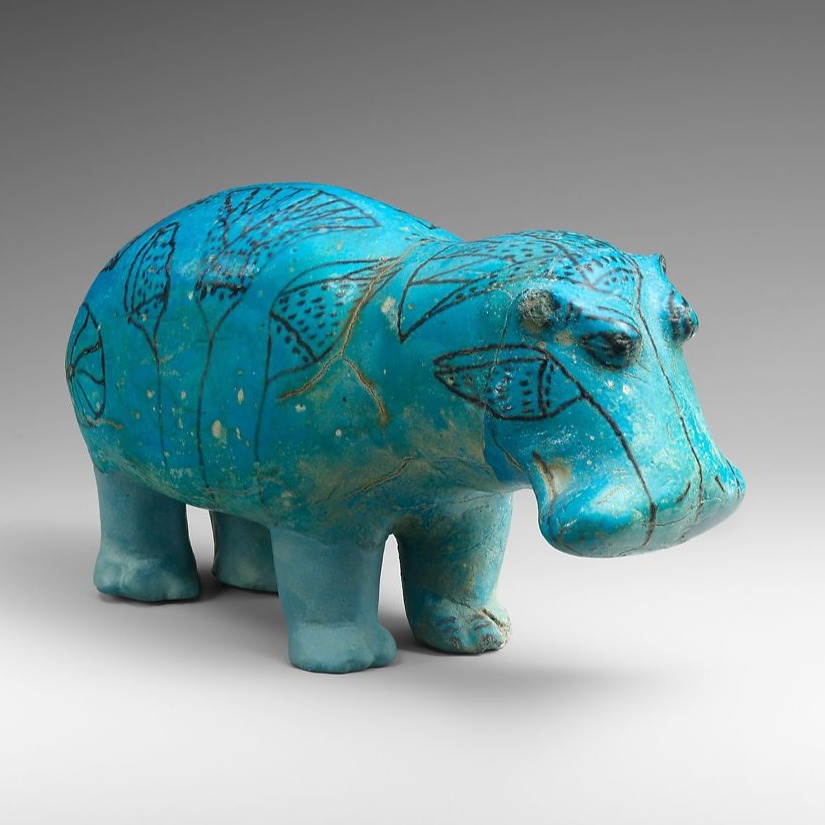
For World Hippo Day, I share with you one of my favorite pieces of art from ancient Egypt: a fragment of limestone with a lovely miniature painting of a hippo:
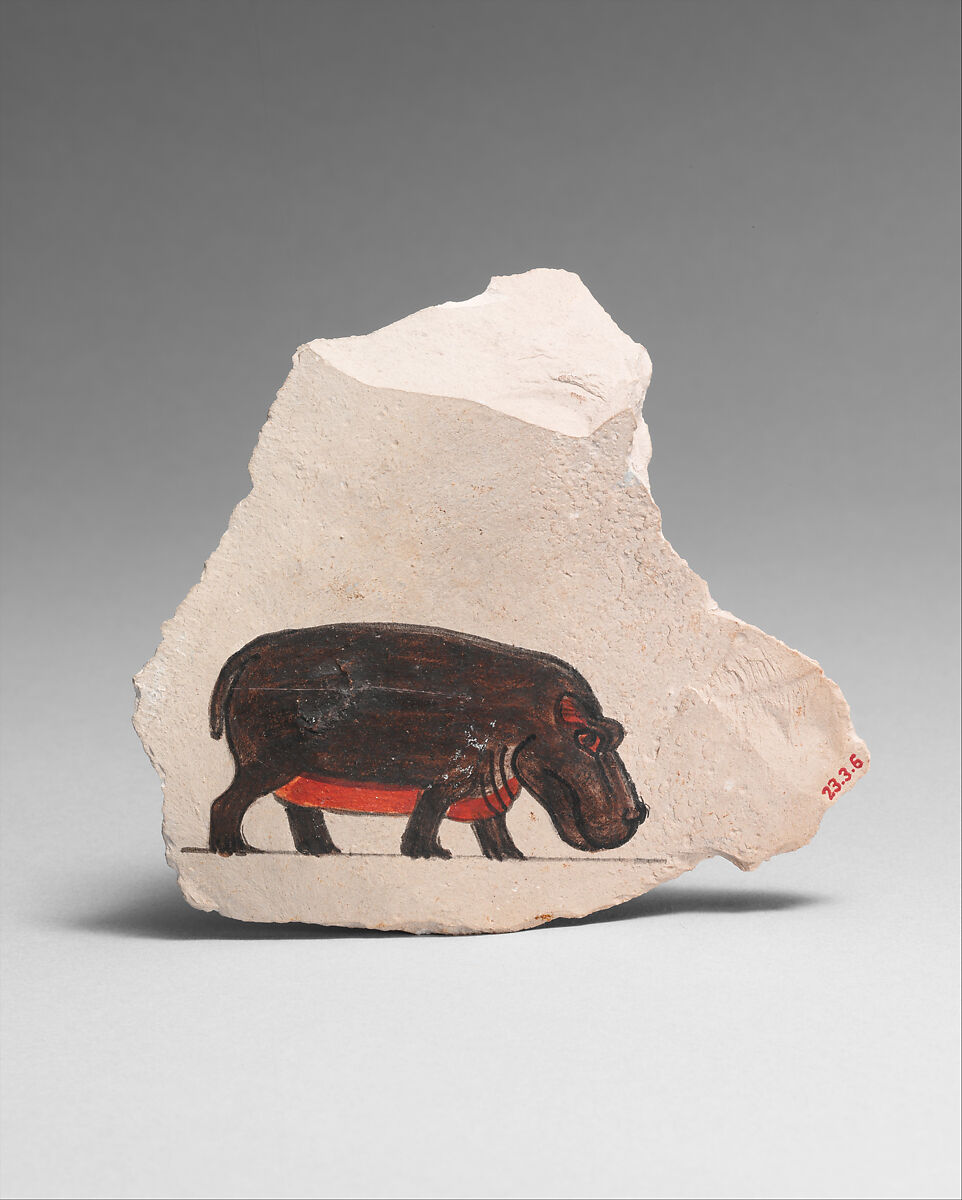
Ancient Egyptian painting of a hippopotamus
From Deir el-Bahri. Ca. 1479 – 1425 BCE (reigns of Hatshepsut and Thutmosis III). Height: 10.8 cm. Ca Metropolitan Museum of Art 23.3.6.
Hippos are one of many animals that feature prominently in Egyptian visual culture. The Egyptians had a rather ambivalent attitude towards the hippopotamus. On the one hand the animal (especially the male version) was regarded destructive and dangerous. On the other, the female hippopotamus was seen as a benign figure, especially associated with motherhood who used her strength and power as a protective force. These dual aspects play out in the iconography.
In everyday Egyptian life, hippos presented a real threat, both to safety and to a family’s food. Hippos leave the river at night to graze on land – often in farmer’s fields. Although not carnivorous, hippos feel vulnerable out of the water, and a hippo won’t hesitate to attack a person (or other animal). There is an old saying – never get between a hippo and water! Ancient Egyptian medical texts refer to healing procedures for people who were bitten by a hippo.
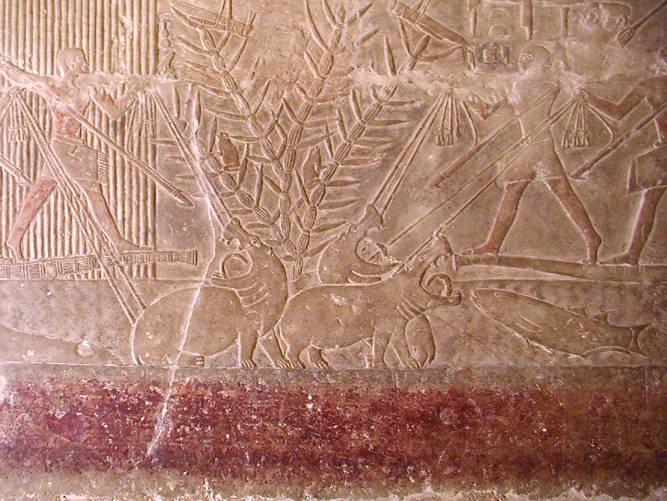 Because of their dangerous nature, hunting hippos became a marker of elite status. Hippopotamus hunts are seen in Egyptian art as far back as the predynastic period, and are presented in a visually striking way in the tombs during the Old Kingdom, where the tomb owner is shown in formal dress vanquishing hippos (or having his servants do it for him).
Because of their dangerous nature, hunting hippos became a marker of elite status. Hippopotamus hunts are seen in Egyptian art as far back as the predynastic period, and are presented in a visually striking way in the tombs during the Old Kingdom, where the tomb owner is shown in formal dress vanquishing hippos (or having his servants do it for him).
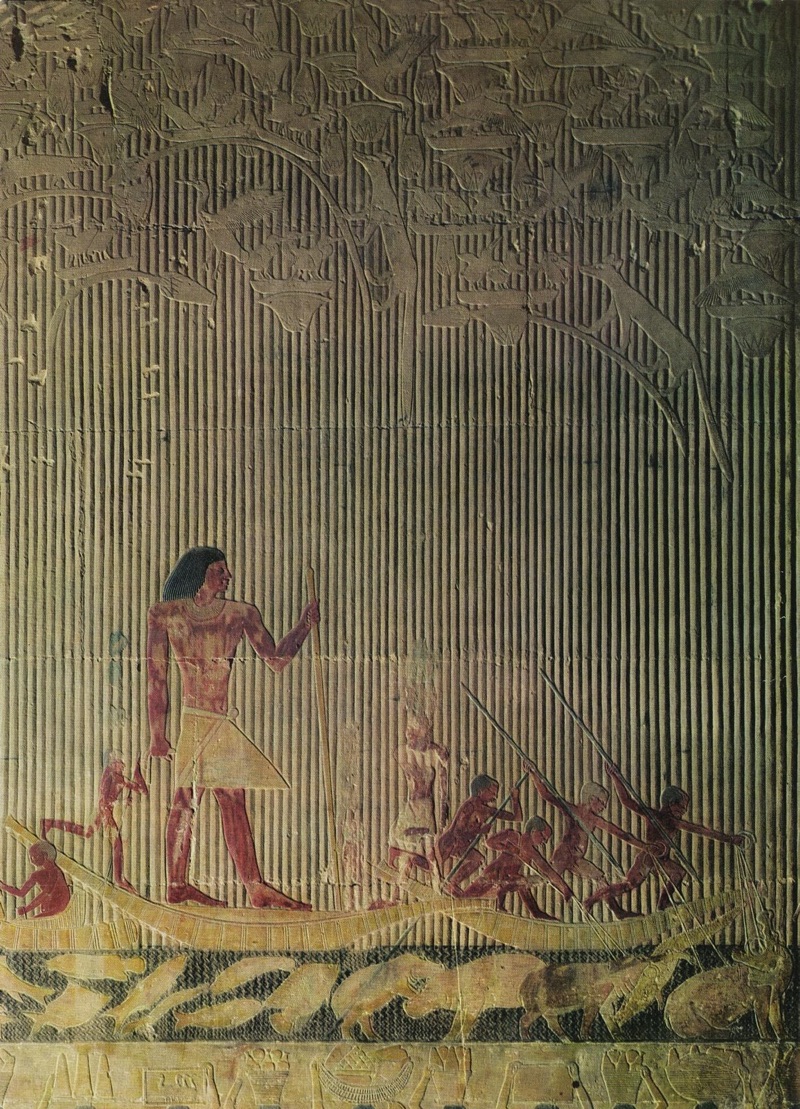
Wall-relief of Ti watching dwarfs hunt hippos in the marshes, from the Tomb of Ti in Saqqara, 5th Dynasty
Wall-relief of Ti watching dwarfs hunt hippos in the marshes, from the Tomb of Ti in Saqqara, 5th Dynasty, ca. 2400 BCE
As the hippo was associated with chaos, the scene becomes a metaphor for the triumph of order over chaos, an important aspect of Egyptian ideology. Notice in the above images how the hippos are shown quite small, whereas the tomb owner is larger than life. The god Seth – chaos incarnate – is sometimes portrayed as a hippopotamus, often in depictions of the battle of Horus and Seth on temple walls.
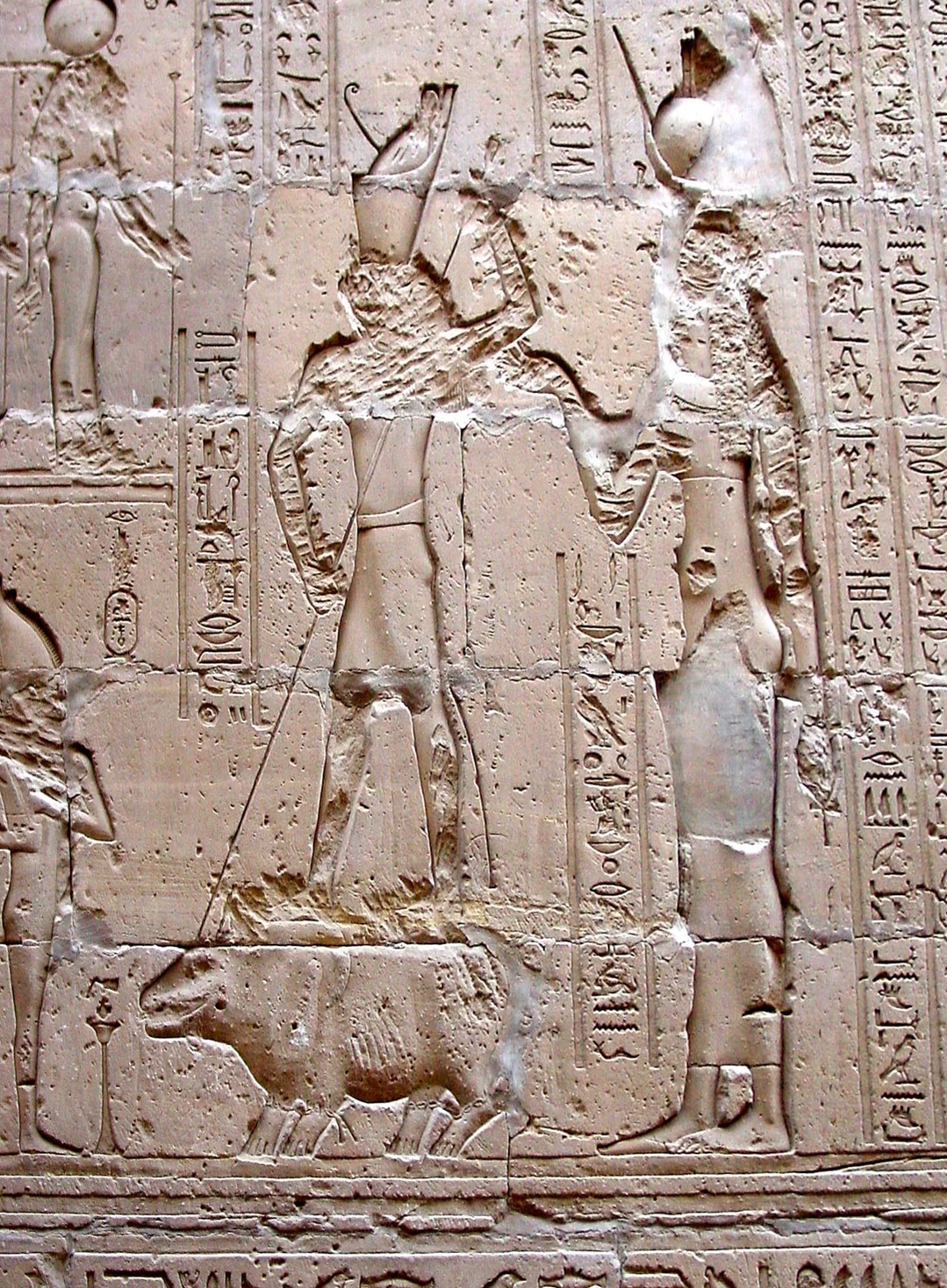
Horus spears the god Seth in Hippo form on the walls of the Temple of Edfu, Ptolemaic Period.
Horus spears the god Seth in Hippo form on the (badly damaged) walls of the Temple of Edfu, Ptolemaic Period.
But as is the case for many large and dangerous animals, the Egyptians recognized the power and strength of these animals and how it could be used for good. There are multiple various of female hippopotamus deities known from Egyptian sources. The most common one was called Taweret, meaning “great [female] one”. Taweret did not have a formal cult, but she was one of the most popular Egyptian household deities, falling into the category of apotropaic gods – gods that people rely on for protection to ward off evil. She shows up on beds, head-rests, cosmetic items, vases, amulets, etc., and was especially associated with protecting women and children, and also fertility (the female hippopotamus is in essence the most powerful female mammal in the Nile, which was the source of all life and prosperity for the Egyptians).
Taweret is depicted with the head of a hippopotamus, pendulous breasts and swollen belly of a pregnant woman, wearing a long-haired wig, sometimes with a headdress. Her teeth are often showing; this emphasizes her protective function, as does the Egyptian hieroglyph sa that she is often shown holding, which is the sign used to denote “protection”. While Taweret most visually resembles a hippopotamus, she has hind legs of a lion. Her arms seem more human, at least until the wrists, where they terminate again in lion’s paws. Sometimes she also has the tail of a crocodile.
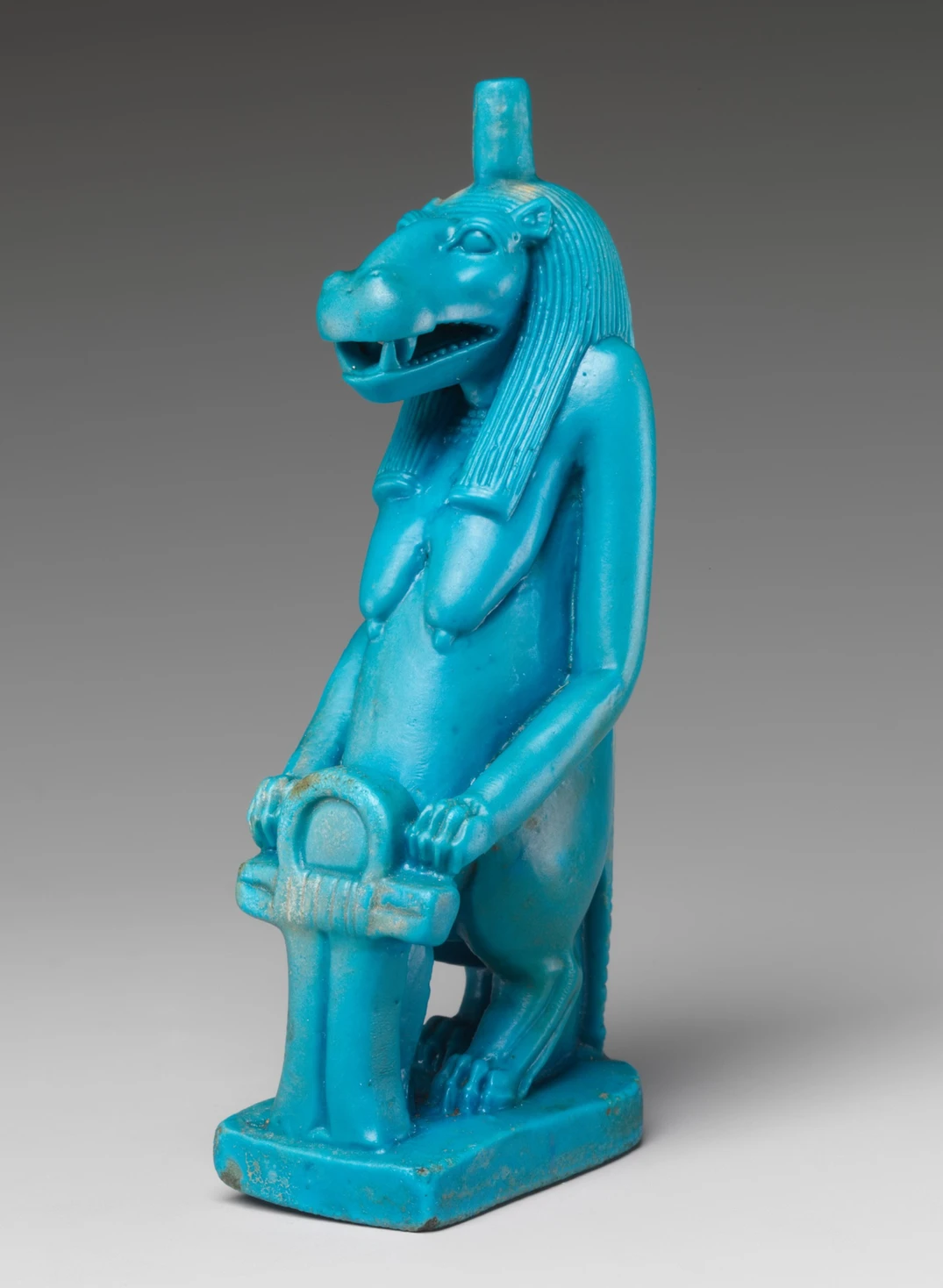
Ancient Egyptian statuette of hippopotamus goddess Taweret, made of faience
Statuette of Taweret, Height 11 cm. Glassy faience. Ca. 332 – 30 BCE. Metropolitan Museum of Art 26.7.1193
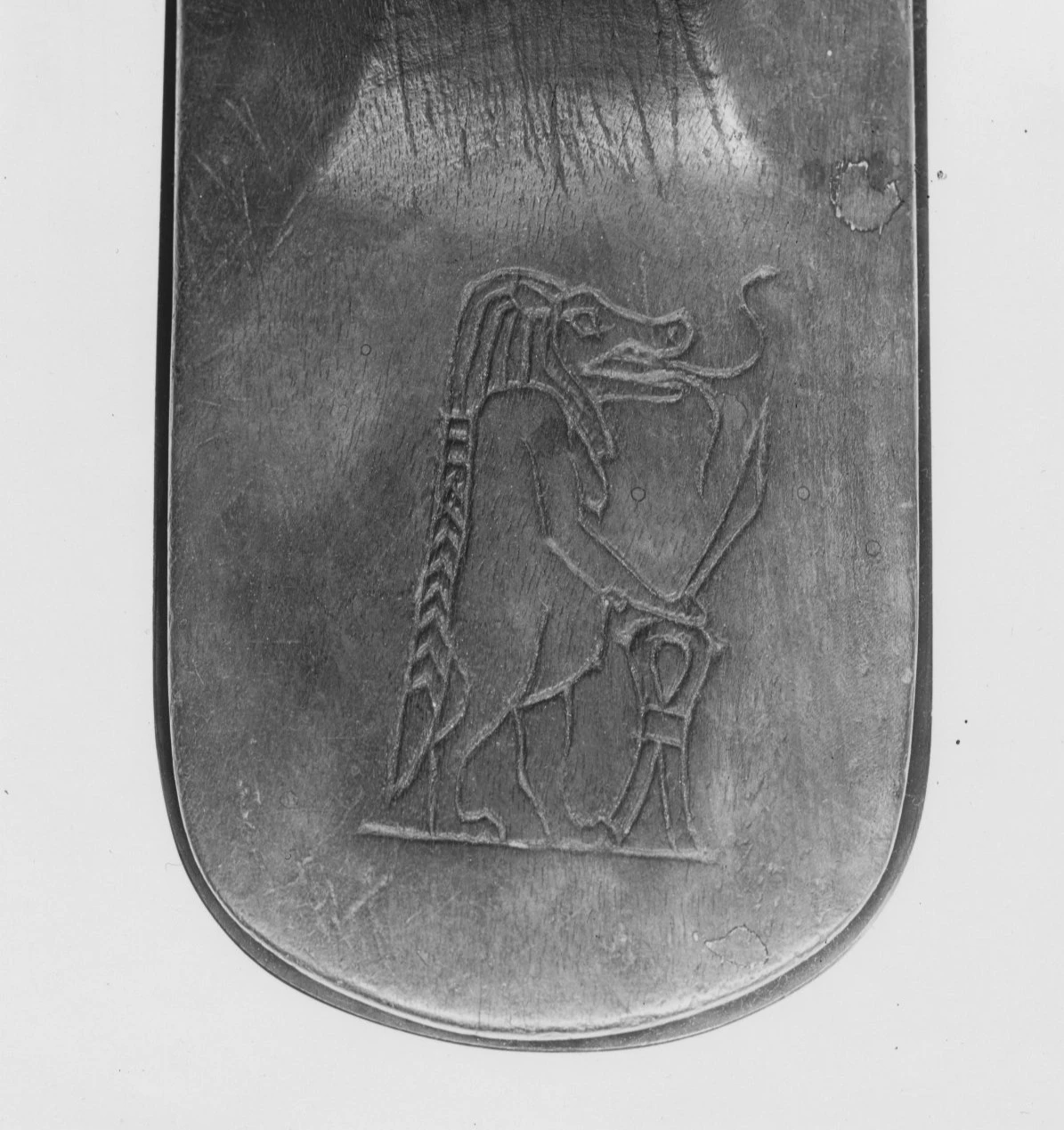
Engraving of the goddess Taweret on the base of an ancient Egyptian wooden headrest
Engraving of the goddess Taweret on the base of a wooden headrest. She holds a knife and her paws are resting on the hieroglyph for protection. Dynasty 18 (ca. 1539 – 1425 BCE). CC-BY Brooklyn Museum.
This type of fanciful combination is not uncommon in Egyptian visual representation, as artists pick key attributes of particular animals in order to heighten the strength of the image or meet the need of the iconography. Taweret is often shown wielding a sword or holding the hieroglyphic symbols of life or protection, so it makes sense to give her more human-like arms; the lion’s claws, however, are far more powerful than human hands. As she is typically shown standing upright, so that her breasts and belly are visible, lion legs provide a more elegant solution than the stubby hippo legs; lion’s legs also communicate power and strength.
Taweret is sometimes associated with other goddesses, such as Hathor. In this scene from the ‘Book of the Dead of the Royal Scribe Ani’, a hippopotamus goddess is standing before Ani’s tomb Hathor in the guise of a cow is emerging from the hill behind her.
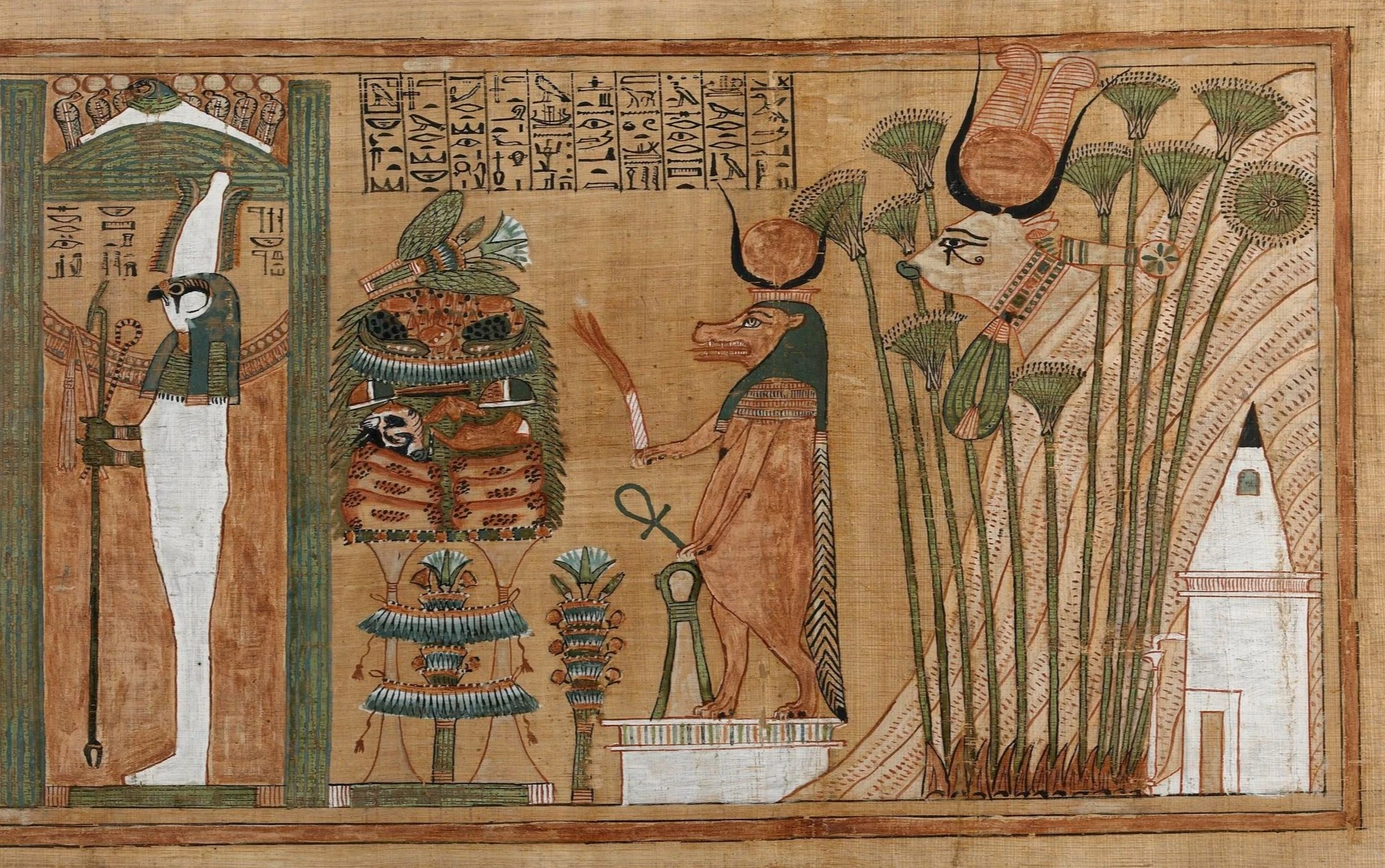
Book of the Dead Papyrus Ani showing Osiris, Taweret, and Hathor
Vignette from the book of the dead of the Royal Scribe Ani. ca. 1250 BCE. Height: 24.4 ~23 cm. British Museum, CC BY-NC-SA 4.0
Only Hathor is mentioned in the accompanying text, suggesting that the hippopotamus goddess here is another manifestation of Hathor.
The ambivalent attitude of Egyptians towards hippos is especially apparent in the lovely blue faience hippo figurines that become popular in the Middle Kingdom, one particular trend was to place blue faience hippo figurines in graves.

Ancient Egyptian faience figurine of a hippo from the Metropolitan Museum of Art
Faience figurine of a hippo, nicknamed “William”. Length 20 cm. Dynasty 12 (ca. 1961 – 1878 BCE). Metropolitan Museum of Art 17.9.1
Faience is a ceramic material composed of ground quartz and frequently glazed in blue, green, or bluish-green. These hippo figurines were painted with images of lotuses, in order to evoke the marshes of the river Nile, where the hippo lived. The lotus is also a symbol of regeneration in Egyptian poetry and art, as they close up in the evening but reopen in the morning sun. Thus we see here the image of the hippo used to evoke the idea of fertility and rebirth. However, these hippo figurines are sometimes found to be deliberately broken at the time of their placement in tombs, particular the legs. Why? This is likely to render the image harmless – to neutralize the hippo’s potentially dangerous character. In the example above, three of the legs have been restored in modern times so that the figurine can stand on its own.
So what was the purpose of the lonely hippo in the image I showed at the beginning?

This is what archaeologists refer to as an ostrakon, which is a broken piece of pottery or (as here) limestone that were used by people for notes or sketches. We find many examples of ostraka being used by artists for practice or reference, and that is perhaps what is intended here
